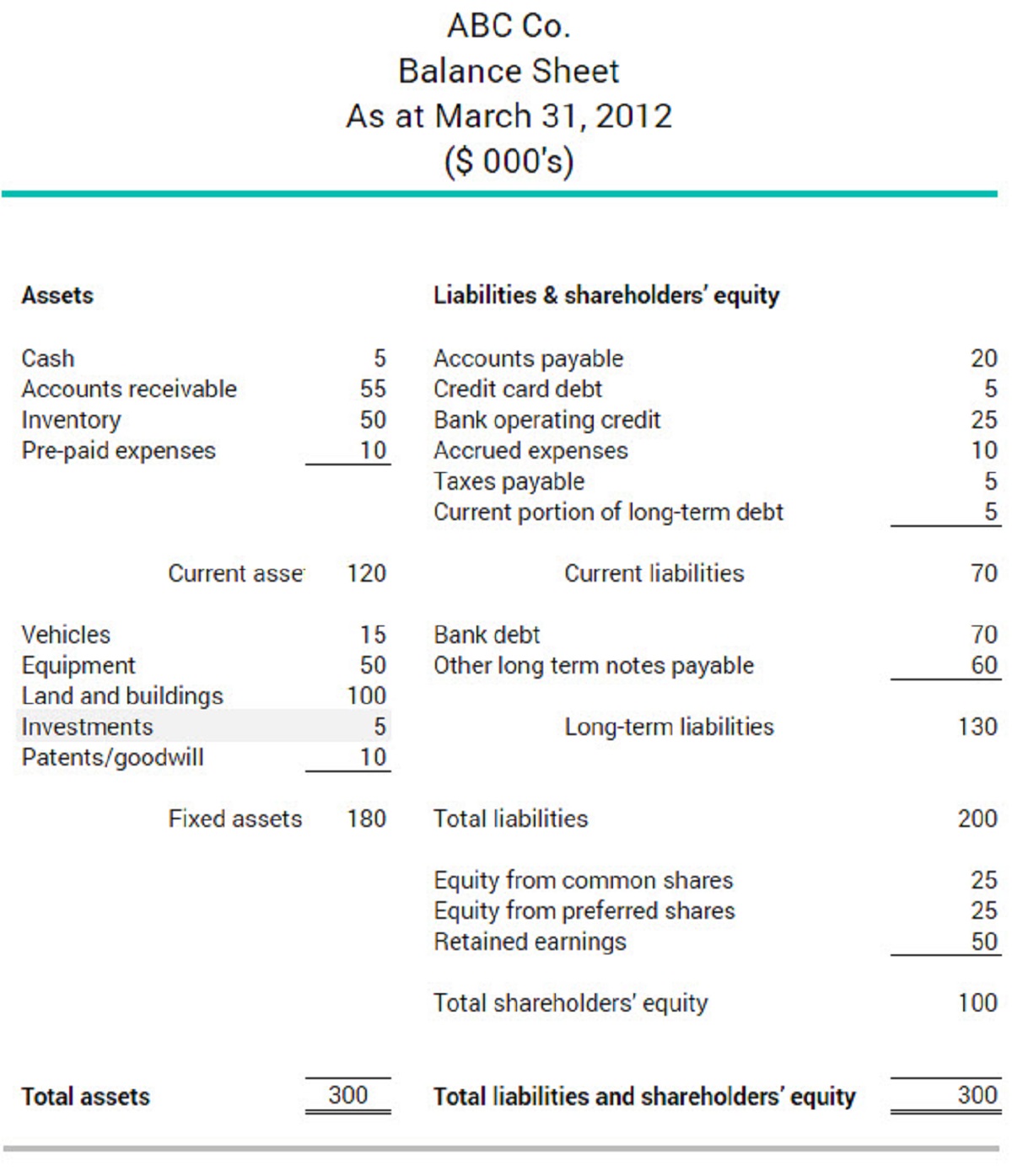Introduction
Welcome to the world of private lending! If you’re looking for an exciting and potentially lucrative business opportunity, starting a private lending company might be the perfect venture for you. Private lending, also known as peer-to-peer lending or alternative lending, has gained significant popularity in recent years as traditional lending institutions have become more restrictive in their lending practices. Private lending offers individuals and businesses the opportunity to secure loans outside of the traditional banking system, providing an alternative source of funding.
Private lending presents a unique opportunity for entrepreneurs to capitalize on the growing demand for quick and flexible financing options. Whether you’re an experienced investor or a newcomer to the financial industry, starting your own private lending company can be a rewarding and profitable endeavor.
In this guide, we will walk you through the essential steps involved in starting a private lending company. From understanding the concept of private lending to establishing legal and compliance requirements, and from developing a marketing strategy to managing your loan portfolio, we will cover everything you need to know to get your business up and running successfully.
Starting a private lending company requires careful planning, research, and strategic decision-making. It’s important to educate yourself about the industry, analyze the market trends, and develop a robust business plan to ensure your company’s sustainability and profitability. Throughout this guide, we will provide you with valuable insights, tips, and best practices to help you navigate this exciting industry and set yourself up for success.
So, if you’re ready to embark on this entrepreneurial journey, let’s dive into the world of private lending and explore how you can start and grow your own private lending company.
Understanding Private Lending
Before diving into starting your own private lending company, it’s essential to have a solid understanding of the concept and dynamics of private lending. Private lending, also known as peer-to-peer lending or alternative lending, is a form of financing that connects borrowers with individual investors or small lending companies.
Unlike traditional lending institutions such as banks, private lending offers borrowers the opportunity to secure loans quickly and with less stringent criteria. Private lenders, on the other hand, earn returns on their investment by charging interest rates on the loans they provide. This alternative financing method has gained popularity due to its accessibility, speed, and flexibility.
Private lending can cater to various borrowers, including individuals, small businesses, and real estate investors. These borrowers may seek private loans for reasons such as debt consolidation, purchasing a property, financing a business venture, or funding a personal project.
As a private lender, it’s crucial to conduct thorough due diligence on potential borrowers to assess their creditworthiness. This includes evaluating their income, credit history, collateral, and repayment ability. Successfully evaluating borrowers’ financial health and risk profile is essential for creating profitable lending opportunities and mitigating potential default risks.
Private lending operates on a peer-to-peer model, where borrowers and lenders are connected through online platforms or lending networks. These platforms and networks serve as intermediaries, facilitating loan origination, documentation, and repayment processes. They also provide essential tools for borrower and lender matching, credit risk assessment, and loan servicing.
By understanding the fundamentals of private lending, you can better position yourself as a knowledgeable and trusted lender in the industry. Stay tuned as we explore further steps in starting a private lending company and learn how to capitalize on this growing market.
Research and Planning
Before taking the plunge into starting a private lending company, it’s crucial to conduct thorough research and develop a comprehensive business plan. Research and planning will serve as your guiding foundation throughout the journey, helping you make informed decisions and navigate the competitive landscape of the private lending industry.
Begin by gathering information about the private lending market, including its current trends, target demographics, and potential niches. Identify your target audience and understand their specific financial needs and preferences. This will allow you to tailor your offerings and marketing strategies accordingly.
Research your competition to gain insights into their lending criteria, interest rates, and loan terms. Analyze their strengths and weaknesses to identify gaps or areas where you can differentiate your business. Finding a unique selling proposition will be key to attracting borrowers and staying competitive in the market.
Developing a solid business plan is essential for the success of your private lending company. Outline your company’s vision, mission, and objectives. Define your target market segment, lending criteria, and risk appetite. Address key operational aspects such as loan origination, underwriting processes, loan servicing, and collections.
Consider the financial aspects of your business, including start-up costs, capital requirements, and projected revenue. Determine how you will fund your initial loans and ensure a consistent source of capital to support future lending activities. You may explore various financing options, including personal funds, private investors, or partnerships with other lenders.
As part of your planning, also consider the technology and software solutions you will need to effectively manage your lending operations. Research loan management systems, customer relationship management (CRM) tools, and other software that can streamline your processes and enhance efficiency.
Moreover, pay attention to regulatory and compliance requirements specific to private lending. Familiarize yourself with the legal framework governing lending practices in your jurisdiction to ensure your operations are fully compliant. Consult legal professionals for guidance in establishing the necessary licenses, permits, and any other legal requirements to operate as a private lender.
By conducting thorough research and developing a comprehensive business plan, you will be well-prepared to establish your private lending company and navigate the challenges and opportunities that lie ahead.
Setting Up Your Business
Once you have completed your research and planning phase, it’s time to set up your private lending business. This section will guide you through the necessary steps to establish your company and ensure that you are legally compliant and fully prepared to start lending.
1. Business Structure: Determine the legal structure of your company, such as a sole proprietorship, partnership, or limited liability company (LLC). Consult with a legal professional to identify the most suitable structure based on your specific needs and circumstances.
2. Name and Branding: Choose a unique and memorable name for your private lending company. Conduct a thorough search to ensure that your chosen name is not already in use by another business in your jurisdiction. Establish a strong brand identity by designing a logo and developing a consistent visual and verbal brand language.
3. Licensing and Permits: Research and obtain the necessary licenses and permits required to operate as a private lender in your jurisdiction. These may include lending licenses, financial services licenses, and compliance certifications. Ensure that you comply with all regulatory and legal requirements specific to private lending.
4. Insurance: Protect your business and assets by obtaining suitable insurance coverage. Consider policies such as professional liability insurance, general liability insurance, and fidelity bond coverage to mitigate potential risks associated with private lending.
5. Office Setup: Establish a physical office space or set up a virtual office to manage your lending operations. Ensure that you have the necessary equipment, such as computers, software, and telecommunications systems, to effectively run your business.
6. Banking and Accounting: Open a business bank account to keep your personal and business finances separate. Set up accounting systems and processes to track your lending activities, income, expenses, and tax obligations. Consider hiring an accountant or using accounting software to maintain accurate financial records.
7. Legal Documentation: Develop a range of legal documentation that will be essential in your lending operations. This may include loan agreements, promissory notes, security agreements, and borrower information forms. Consult legal professionals to ensure that your documents comply with local laws and adequately protect your interests.
8. Technology and Systems: Implement loan management software and other technology solutions to streamline your lending processes. Consider using customer relationship management (CRM) software to manage your borrower relationships and keep track of communication and loan performance.
By following these steps, you will have all the essential elements in place to kickstart your private lending business. Remember to consult with professionals in legal, accounting, and technology domains to ensure that you set up your business correctly and efficiently.
Building a Network
Building a strong network is essential for the success of your private lending business. By establishing relationships with key stakeholders in the industry, you can increase your visibility, gain credibility, and attract potential borrowers and investors. Here are some steps to help you build a robust network:
1. Attend Industry Events: Participate in conferences, seminars, and networking events dedicated to the lending and finance industry. These events provide valuable opportunities to meet industry experts, potential borrowers, and other lenders. Engage in conversations, share your expertise, and exchange business cards to establish meaningful connections.
2. Join Professional Associations: Become a member of professional associations or organizations related to lending, finance, or real estate. These associations often organize networking events and provide resources and educational opportunities for members. Active participation in these groups will help you build credibility and expand your network.
3. Utilize Online Platforms: Leverage online platforms and social media to connect with potential borrowers and investors. Create a professional presence on platforms like LinkedIn, establish a website for your lending business, and actively engage in relevant online communities and forums.
4. Form Partnerships: Seek strategic partnerships with other professionals in the industry. Collaborate with mortgage brokers, real estate agents, and financial advisors who can refer borrowers to your lending company. Building mutually beneficial relationships can help you expand your reach and access a wider pool of potential borrowers.
5. Offer Referral Incentives: Encourage your existing borrowers and investors to refer others to your private lending company by offering referral incentives. Establish a referral program that rewards individuals who bring in new business. Word-of-mouth referrals are powerful and can help you attract high-quality borrowers.
6. Develop Relationships with Professionals: Establish relationships with professionals who play key roles in the lending industry, such as attorneys, accountants, and appraisers. These professionals can provide valuable insights, referrals, and guidance on legal and financial matters that impact your lending operations.
7. Engage in Thought Leadership: Establish yourself as a thought leader in the private lending industry. Write informative articles or blog posts, provide educational content, and participate in industry-related discussions. Sharing your knowledge and expertise will not only enhance your credibility but also attract potential borrowers and investors.
Remember, building a network takes time and effort. Be proactive, genuine, and consistent in your networking activities. By developing strong relationships with industry professionals and potential borrowers, you will enhance your business’s reputation and increase the chances of success.
Creating a Solid Business Plan
A solid business plan is crucial for the success and sustainability of your private lending company. It serves as a roadmap, guiding your strategic decisions and outlining the key components of your business. Here are the essential elements to include in your business plan:
1. Executive Summary: Provide an overview of your business, highlighting its mission, vision, and goals. Summarize key aspects, such as your target market, unique selling proposition, and competitive advantage.
2. Market Analysis: Conduct a comprehensive analysis of the private lending market, including its size, trends, and potential growth opportunities. Identify your target audience, understand their needs, and assess the competition.
3. Lending Criteria: Clearly define your lending criteria, including minimum credit score requirements, acceptable collateral, and maximum loan amounts. Outline the loan terms, interest rates, and repayment options you will offer to borrowers.
4. Marketing and Sales Strategy: Develop a marketing and sales strategy to attract borrowers and build awareness of your private lending services. Describe your promotional activities, advertising channels, and customer acquisition strategies.
5. Operational Plan: Detail your day-to-day operational processes, including loan origination, underwriting, documentation, and loan servicing. Outline your staffing requirements, technology infrastructure, and the loan management software you will utilize.
6. Financial Projections: Provide detailed financial forecasts, including projected revenue, expenses, and profitability. Consider factors such as loan origination volume, interest income, default rates, and operating costs. Prepare financial statements, such as income statements, balance sheets, and cash flow statements.
7. Risk Management: Identify potential risks and mitigation strategies for your lending operations. Develop a risk management plan that addresses credit risk, market risk, and operational risk. Consider establishing relationships with collection agencies and implementing loan servicing practices.
8. Exit Strategy: Outline your exit strategy, including options for selling or liquidating your loan portfolio, if necessary. Evaluate potential exit routes, such as selling the company, merging with another lender, or transitioning into a different line of lending.
Remember, a well-crafted business plan should be dynamic and adaptable. Continuously review and update your business plan as market conditions change, and new opportunities arise. Your business plan will serve as a valuable tool in attracting investors, securing financing, and guiding your private lending company towards long-term success.
Establishing Legal and Compliance Requirements
Establishing legal and compliance requirements is a critical step in starting a private lending company. Ensuring compliance with regulations not only protects your business but also instills trust and confidence in borrowers and investors. Here are the key aspects to consider:
1. Research Local Laws and Regulations: Familiarize yourself with the laws and regulations that govern private lending in your jurisdiction. Pay attention to licensing requirements, lending regulations, usury laws, consumer protection laws, and anti-money laundering (AML) regulations. Seek guidance from legal professionals with expertise in the financial services industry.
2. Obtain Required Licenses: Determine the licenses and permits necessary to operate as a private lender in your area. This may include obtaining a finance lending license, mortgage license, or any other licenses specific to your region. Ensure you fulfill all the necessary requirements and submit the required documentation to regulatory authorities.
3. Formulate Loan Documentation: Develop legally compliant loan documentation, including loan agreements, promissory notes, and security agreements. Consult with legal professionals to ensure that your documentation adheres to local laws and effectively protects your interests as a lender.
4. Implement Compliance Policies: Create internal policies and procedures to ensure compliance with all applicable laws and regulations. Establish protocols for borrower due diligence, anti-money laundering checks, and data protection. Train your staff on these policies and regularly audit and review your compliance practices.
5. Consumer Protection and Fair Lending Practices: Familiarize yourself with fair lending practices, including the Equal Credit Opportunity Act (ECOA) and the Fair Housing Act. Ensure that your lending practices do not discriminate against borrowers based on factors such as race, religion, gender, or marital status.
6. Protect Borrower Information: Safeguard borrowers’ personal and financial information by implementing robust data protection measures. Comply with regulations such as the General Data Protection Regulation (GDPR) if applicable to your operations. Maintain strict confidentiality and security protocols to prevent data breaches or unauthorized access to sensitive information.
7. Stay Updated with Regulatory Changes: Regularly monitor regulatory developments and stay informed about changes in laws and regulations that may impact your private lending business. Join industry associations and subscribe to newsletters or publications that provide updates on legislative changes.
8. Engage Legal Counsel: Retain legal counsel specializing in financial services and lending regulations to advise and support your private lending operations. They can provide guidance on legal matters, review contracts, and ensure your compliance with regulatory requirements.
Establishing a strong legal and compliance framework is vital to running a reputable and successful private lending business. By adhering to legal requirements and implementing robust compliance procedures, you can protect your business, mitigate risks, and build trust with borrowers and investors.
Developing a Marketing Strategy
Developing a robust marketing strategy is essential for the success of your private lending company. A well-executed marketing plan will help you attract borrowers, build brand awareness, and differentiate yourself from the competition. Here are key elements to consider when developing your marketing strategy:
1. Define Your Target Audience: Identify your ideal borrowers and understand their needs, preferences, and financial goals. Segment your target audience based on factors such as creditworthiness, loan purpose, and industry to tailor your marketing efforts effectively.
2. Build a Strong Brand Identity: Develop a compelling brand identity that reflects your company’s unique value proposition. Define your brand voice, visual elements, and messaging to create a consistent and recognizable brand across your marketing channels.
3. Create a Professional Website: Establish a user-friendly website that showcases your lending services, loan products, and key information about your company. Optimize your website for search engines and ensure it is mobile-responsive for a seamless user experience.
4. Content Marketing: Produce high-quality, informative content that addresses the needs and pain points of your target audience. Utilize blog posts, articles, and educational resources to establish yourself as an industry thought leader and build trust with potential borrowers.
5. Search Engine Optimization (SEO): Implement SEO strategies to improve your website’s visibility in search engine results. Conduct keyword research to understand the terms your target audience is searching for and optimize your website content accordingly.
6. Social Media Marketing: Leverage social media platforms such as LinkedIn, Facebook, and Twitter to engage with your target audience. Share educational content, industry insights, and borrower success stories to build credibility and foster a sense of community.
7. Paid Advertising: Consider using paid advertising channels like Google Ads or social media ads to reach a wider audience. Develop targeted campaigns based on demographics, interests, and borrowing behavior to optimize your ad spend.
8. Referral Program: Encourage satisfied borrowers or industry professionals to refer others to your private lending company. Implement a referral program that rewards individuals for successful referrals, incentivizing them to promote your services.
9. Partner with Industry Influencers: Collaborate with influencers or experts in the lending industry to expand your reach and gain credibility. Engage in partnerships, co-host webinars, or contribute guest articles to position yourself as a trusted name in private lending.
10. Track and Analyze Results: Implement tracking tools and analytics to monitor the performance of your marketing initiatives. Measure key metrics such as website traffic, lead generation, conversion rates, and customer acquisition costs to optimize your marketing strategy over time.
By developing a comprehensive marketing strategy and executing it consistently, you can effectively reach your target audience, build brand awareness, and generate quality leads for your private lending business. Continuously evaluate and refine your strategy based on market trends and customer feedback to stay ahead in the competitive lending landscape.
Evaluating and Selecting Borrowers
One of the crucial aspects of running a successful private lending company is effectively evaluating and selecting borrowers. As a private lender, it’s essential to assess the creditworthiness, financial stability, and repayment ability of potential borrowers to mitigate risk and ensure the profitability of your loan portfolio. Here are important steps to follow when evaluating and selecting borrowers:
1. Establish Lending Criteria: Define the specific lending criteria that align with your risk tolerance and business objectives. Consider factors such as credit score, income stability, debt-to-income ratio, and loan purpose. Set minimum requirements for each criterion to help you screen potential borrowers effectively.
2. Conduct Thorough Due Diligence: Perform comprehensive due diligence on potential borrowers before approving a loan. Request financial documents such as tax returns, bank statements, and credit reports to assess their financial health and ability to repay the loan. Verify employment and income information to ensure it is accurate.
3. Assess Creditworthiness: Evaluate the creditworthiness of borrowers by reviewing their credit history and credit scores. Consider factors such as payment history, outstanding debt, and credit utilization. A strong credit history indicates a borrower’s ability to manage debt responsibly.
4. Evaluate Collateral: If collateral is involved in the loan, assess its value and suitability. Conduct a thorough appraisal of the collateral property or asset to determine its market value. Consider the type of collateral and the ease of liquidation in the event of default.
5. Analyze Financial Ratios: Review key financial ratios such as debt-to-income ratio and loan-to-value ratio. These ratios provide insights into a borrower’s financial stability and the risk associated with lending to them. Ensure that the borrower’s debt is manageable and that the loan amount is reasonable in relation to the value of the collateral.
6. Assess Repayment Ability: Evaluate a borrower’s ability to repay the loan by analyzing their income, employment stability, and cash flow. Assess the borrower’s sources of income and the stability of those income streams. Consider their monthly expenses and obligations to determine if they have sufficient cash flow to meet their repayment obligations.
7. Consider Character and Industry Experience: While financial metrics are important, also consider the borrower’s character and industry experience. Evaluate their track record, business acumen, and reputation in the industry. A borrower with relevant experience and a strong reputation may pose a lower risk.
8. Document Loan Terms: Once you have evaluated and approved a borrower, clearly document the terms of the loan, including interest rate, repayment schedule, and any other conditions. Ensure that both parties understand and agree to the terms before finalizing the loan agreement.
By consistently evaluating and selecting borrowers based on rigorous criteria and due diligence, you can minimize the risk of loan defaults, protect your investment, and ensure the long-term profitability of your private lending business.
Managing Loan Portfolio
Managing your loan portfolio effectively is crucial to the success and profitability of your private lending company. A well-managed portfolio ensures that loans are performing as expected, minimizes default risks, and maximizes returns. Here are key steps to consider when managing your loan portfolio:
1. Loan Servicing and Collections: Establish effective loan servicing processes to manage borrower payments, ensure timely collection, and handle any delinquencies. Implement clear procedures for following up with borrowers, sending payment reminders, and addressing late or missed payments promptly.
2. Risk Monitoring and Mitigation: Continuously monitor the risk profile of your loan portfolio. Regularly assess the financial health of borrowers to identify early warning signs of potential defaults. Establish risk-rating systems to categorize loans based on their risk level and take appropriate actions to mitigate any identified risks.
3. Diversification: Diversify your loan portfolio by spreading your investments across different borrowers, sectors, and loan types. This helps reduce concentration risk and ensures that any potential losses from defaults are balanced out by well-performing loans. Consider setting limits on the maximum exposure to a single borrower or industry.
4. Loan Performance Analysis: Analyze the performance of your loans to identify trends, patterns, and areas for improvement. Regularly review key performance indicators such as delinquency rates, default rates, and repayment rates. Gain insights into loan profitability, customer satisfaction, and overall portfolio health.
5. Loan Modifications and Workouts: In cases where borrowers face financial difficulties, explore loan modification options to help them overcome temporary challenges. This may include adjusting payment terms, extending the loan duration, or offering temporary forbearance. Work closely with borrowers to find mutually beneficial solutions and avoid unnecessary defaults.
6. Stay Compliant: Ensure ongoing compliance with regulatory requirements and maintain accurate records of loan agreements, borrower information, and any communication with borrowers. Be aware of any changes in lending regulations that may impact your loan portfolio management practices.
7. Regular Reporting: Develop internal reporting systems to track and assess the performance of your loan portfolio. Generate reports on loan origination volume, repayment status, defaults, and collection efforts. Use these reports to make informed decisions and identify areas for operational improvement.
8. Continuous Improvement: Continually refine your loan underwriting processes, credit risk assessment methods, and collection strategies based on insights gained from loan performance analysis. Stay up to date with industry best practices and adopt technology solutions that can enhance your loan portfolio management efficiency.
By effectively managing your loan portfolio, you can minimize default risks, optimize returns, and ensure the long-term success of your private lending company. Regular monitoring, proactive risk mitigation, and continuous improvement are the keys to maintaining a healthy and profitable loan portfolio.
Ensuring Profitability and Growth
Ensuring profitability and fostering growth are fundamental objectives for any private lending company. By implementing strategic measures and focusing on key areas, you can maximize your company’s financial performance and drive sustainable growth. Here are key steps to consider:
1. Pricing Strategy: Develop a pricing strategy that balances competitiveness with profitability. Determine interest rates, origination fees, and other charges based on factors like market rates, borrower creditworthiness, and risk assessment. Regularly review and adjust your pricing strategy to maintain a healthy profit margin.
2. Cost Management: Continuously evaluate and manage your operating costs to improve efficiency and profitability. Identify areas where costs can be reduced or optimized without sacrificing quality or customer service. Regularly review vendor contracts, negotiate better rates, and explore automation and process optimization opportunities.
3. Expand Loan Products: Consider expanding your loan offerings to diversify revenue streams and capitalize on emerging opportunities. Explore different types of loans, such as small business loans, fix-and-flip loans, or construction loans, to cater to a broader market and meet the evolving needs of borrowers.
4. Market Research and Analysis: Conduct ongoing market research to identify trends, shifts in borrower preferences, and emerging market niches. Stay informed about macroeconomic factors and regulatory changes that may impact the lending landscape. Use this information to refine your lending strategies and identify new growth opportunities.
5. Customer Relationship Management: Foster strong relationships with borrowers to encourage repeat business and referrals. Provide exceptional customer service, respond promptly to inquiries, and address any concerns or issues. Leverage technology tools, such as customer relationship management (CRM) software, to manage and nurture borrower relationships effectively.
6. Technology Investments: Invest in technology solutions that can streamline your operations, enhance efficiency, and improve decision-making. Implement loan management systems, automated underwriting tools, and analytics platforms to improve loan origination, risk assessment, and portfolio management processes.
7. Continuous Education and Training: Stay updated with industry trends and best practices by participating in training programs, attending conferences, and engaging in continuing education. Continuous learning equips you with the knowledge and skills to adapt to market changes and make informed strategic decisions.
8. Strategic Partnerships: Collaborate with strategic partners to expand your reach, access new markets, and leverage their expertise. Form alliances with mortgage brokers, real estate agents, or other professionals in related industries who can refer potential borrowers or provide valuable insights and market intelligence.
9. Monitor Key Performance Indicators (KPIs): Track and analyze key performance indicators such as loan origination volume, delinquency rates, default rates, and profitability metrics. Regularly review these metrics to identify areas for improvement and make data-driven decisions to drive profitability and growth.
10. Innovation and Adaptability: Embrace innovation and continuously seek ways to improve your products, services, and processes. Stay agile and adaptable in response to changing market conditions and evolving borrower needs. Be open to incorporating new technologies and strategies to stay competitive in the private lending industry.
By prioritizing profitability, embracing growth strategies, and staying attuned to market dynamics, you can position your private lending company for long-term success. Focus on delivering value to borrowers while maximizing operational efficiencies to ensure a thriving and sustainable business.
Conclusion
Starting a private lending company can be an exciting and profitable venture for those interested in the finance industry. By following the steps outlined in this guide, you can establish a solid foundation for your business and navigate the intricacies of the private lending landscape.
Understanding the concept of private lending and conducting thorough research and planning are crucial initial steps to ensure the success of your business. Setting up your business, including obtaining the necessary licenses, establishing your brand, and implementing compliant processes, is essential for long-term sustainability.
Building a network of industry professionals, developing a comprehensive marketing strategy, and effectively evaluating and selecting borrowers are key elements to attract potential borrowers and foster growth. Managing your loan portfolio and ensuring profitability requires ongoing diligence in loan servicing, risk management, and financial analysis.
To ensure the profitability and growth of your private lending company, you must continuously seek opportunities for improvement, adapt to market changes, and prioritize customer satisfaction. Stay informed about industry trends, regulatory requirements, and technological advancements that can enhance your operations and drive your business forward.
Remember, success in private lending requires patience, resilience, and a commitment to ethical practices. With a strong business plan, a solid network, effective marketing strategies, and a diligent approach to borrower evaluation and loan management, you can establish yourself as a trusted player in the industry.
So, dive into the world of private lending with confidence, embrace the challenges, and seize the opportunities that come your way. With resourcefulness, astute decision-making, and a customer-centric approach, your private lending company has the potential to flourish in this dynamic and rewarding industry.

























